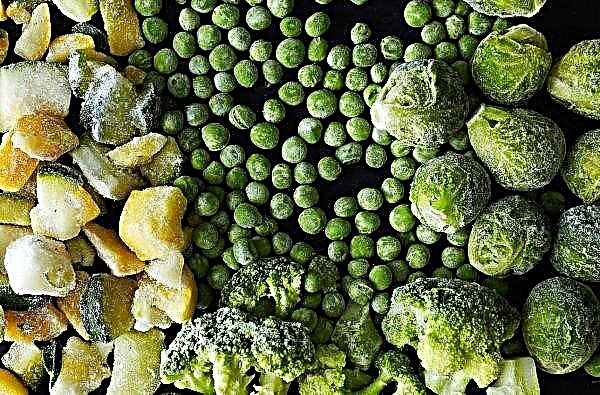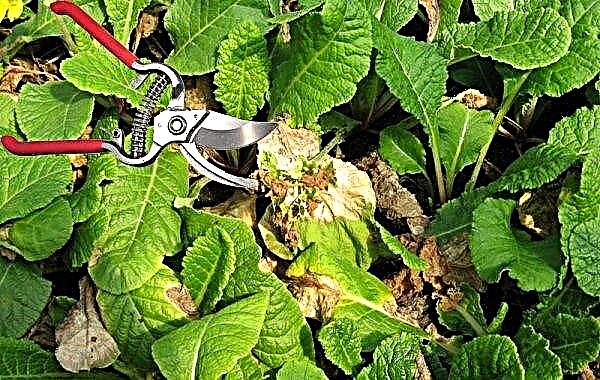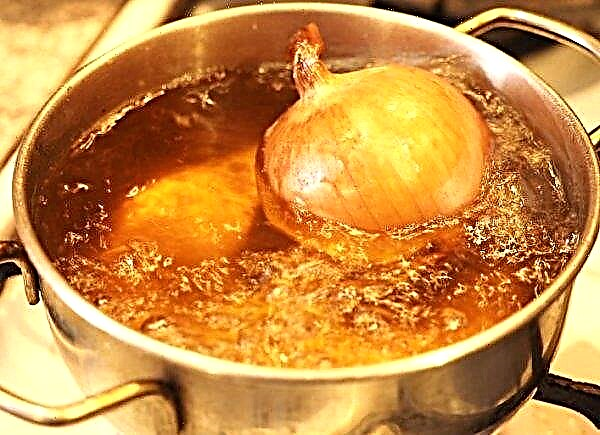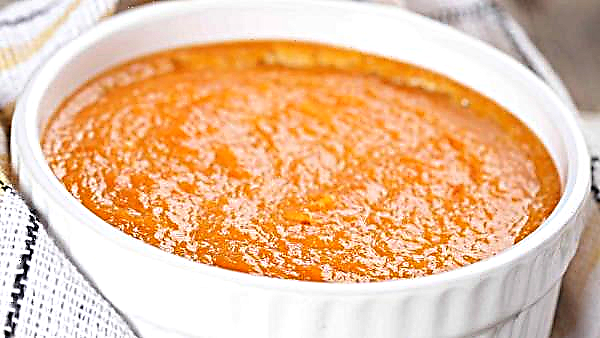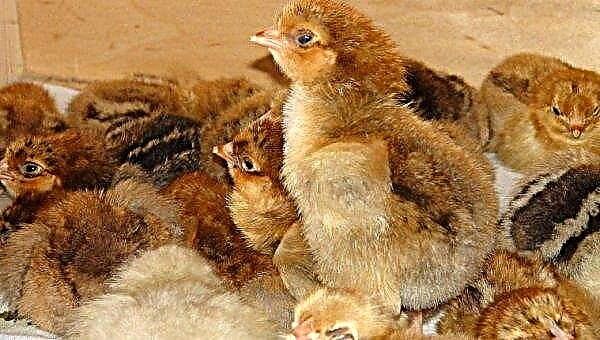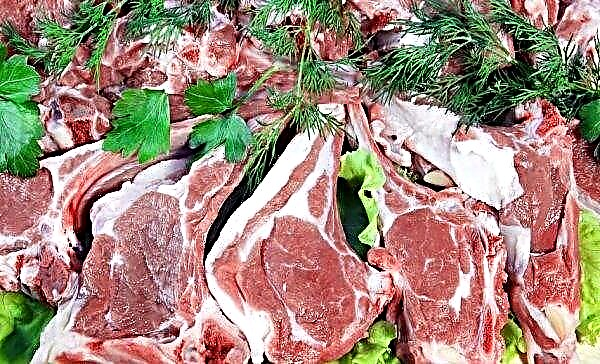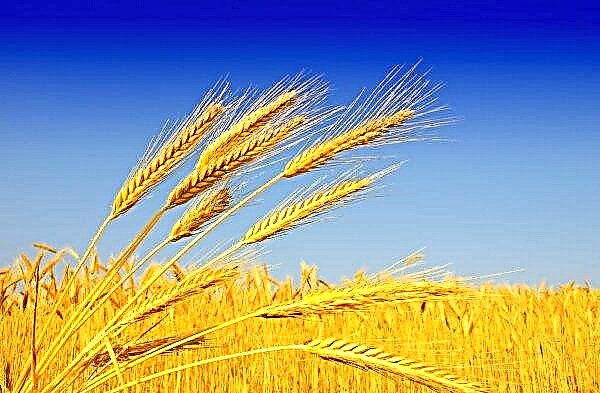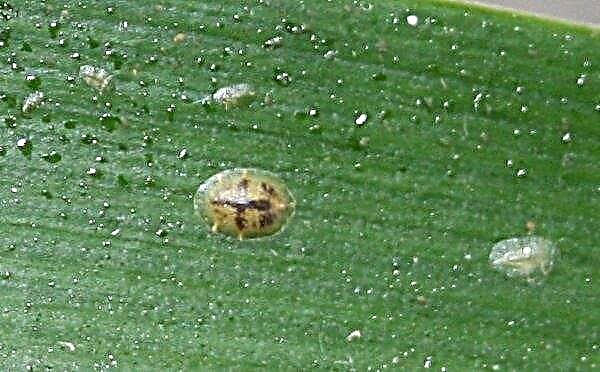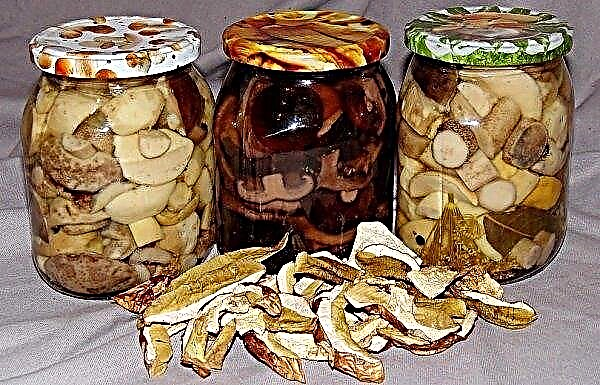An effective complex of micronutrients is required for any vegetable, and potatoes are no exception. Using the necessary amount of fertilizer at all stages of the growing season, you can achieve a grandiose result when growing it on a personal plot. The secret to a rich potato crop is a suitable and timely micronutrient supplementation.
Dates and rates of fertilizer application
All root crops need to be micronutrient, as they quickly deplete the earth. Early varieties of minerals are intensively taken from the soil, in contrast to varieties of longer ripening.
If possible, it is better to change the area for planting potatoes. It is advisable to adjust the amount of nutritional supplementation. The potato yield is also affected by the friability of the earth, the abundance of watering and the balance of nutrients.Did you know? Saudi Arabian Khalil Sehzat has grown the largest potato. The weight of the vegetable entered in the Guinness Book of Records was 11.2 kg.
Compliance with the rules and timing of fertilizing the soil affects its effectiveness. It is unreasonable to refuse autumn by top dressing the soil. For effective care and growing potatoes in the fall, it is advisable to fertilize the earth with all valuable minerals. Organic feeding should be discarded if the soil was infected with pests, and the plant itself suffered from diseases.

In the autumn, it is recommended to use overripe humus or liquid compost. Organic nourishment will contribute to better absorption of substances by young potato tubers. It is necessary to add organic matter in an amount of 5-10 kg per 1 m², uniformly scattering it around the entire perimeter of the infield before plowing.
In autumn, potassium sulfate (2 kg per hundredth) and double superphosphate (1 kg per hundredth) should be added to the soil. Sowing green manure under the winter is one way to increase soil fertility. Thanks to siderates, not only trace elements are accumulated in young sprouts of potato tops, but also nitrogen.
Did you know? The most expensive potato in the world called La Bonnotte is grown on the Noirmoutier island in France. The price per 1 kg can reach 500 euros.
During planting in the soil, it is necessary to adhere to such proportions of fertilizer application in the ground per one hundredth:
- potassium sulfate - 2 kg;
- double superphosphate - 1 kg;
- ammonium nitrate - 1 kg;
- wood ash (ash) - 5 kg.
How to fertilize potatoes when planting in a hole
The amount of top dressing added to each well affects the taste of the future crop and its total volume. For the rapid growth of tubers, the absorption of nutrient minerals from the soil occurs intensively.
Fertilizer will have an effective effect on the development of root crops if it is placed in portions in a prepared hole immediately before planting.
There is no one surefire recipe for feeding potatoes. The composition of the soil affects not only the type of fertilizer, but also the proportions that the landowner should use.
In their structure, fertilizers are granular and loose substances of natural origin. They are usually divided into natural, mineral and complex, since this classification gives a comprehensive picture of its chemical composition.
Important! A one-time feeding of the root crop will not be enough, since it contains mineral substances that are necessary for it at all periods of vegetation.
Each potato bush must contain such a volume of trace elements:
- 100 g of potassium;
- 30 g of phosphorus;
- 50 g of nitrogen.
It is recommended to put freshly collected humus of farm animals into the hole. To saturate the tubers with nitrogen and phosphorus, 200 g will suffice. Thanks to microelements, an excellent crop can be achieved.
It is better to buy complex fertilizers, as additional fertilizing is not needed. Among gardeners, bone meal has proven itself positively. Only 125 ml (half a glass) per well is required.
Organic fertilizer
Organics are most often of natural origin. The nutrients and trace elements contained in it play the role of an excellent source of nutrition for the full growth of potatoes. The accumulated humus in the earth improves its chemical composition. These fertilizers will be effective on sod-podzolic soils, and on chernozems it decreases.
Organic trace elements include:
- humus farm animals;
- chicken droppings;
- wood ash (ash).
Let us describe these types in more detail:
- Humus. Fresh pus is not the best substance to feed when planting in the ground. It is necessary to apply only rotted. Do not use paired humus due to the content of parasites and pathogens in it. It is advisable to cook humus for several months.
 200–250 g of fertilizer should be put into the prepared hole. In order for the potato bush to get all the necessary amount of nitrogen and phosphorus, the indicated dosage will be quite enough. In addition, potash fertilizer should be added to the soil, since they are not contained in it initially. Humus in liquid form must be applied to chopped straw after harvesting potatoes. The sooner organic matter works in the soil, the faster and more fully are the nutrient minerals needed for the development of tubers used.
200–250 g of fertilizer should be put into the prepared hole. In order for the potato bush to get all the necessary amount of nitrogen and phosphorus, the indicated dosage will be quite enough. In addition, potash fertilizer should be added to the soil, since they are not contained in it initially. Humus in liquid form must be applied to chopped straw after harvesting potatoes. The sooner organic matter works in the soil, the faster and more fully are the nutrient minerals needed for the development of tubers used. - Chicken droppings. It must be applied only in liquid form, because in fresh it can burn the plant. To do this, dissolve 1 liter of dry manure in 10 liters of fresh water. In order for the container with the liquid to infuse, it should be put in a warm place for 3 days. It is advisable to use the finished solution at the rate of 1 liter per well.

Wood ash. It contains the necessary amount of minerals for potatoes, such as magnesium, sodium, calcium and potassium. Additional top dressing of the earth in the autumn will be unnecessary if the addition of ash is planned. 150–200 g of ash are required in pre-prepared wells. Ashes scare away a dartworm (the larva of a nutcracker beetle) - the most basic enemy of potatoes. Living in the ground up to 4 years, these parasites spoil the root tubers. The pest will not reach the mother tuber if it is thoroughly wiped with ash before entering the hole.
 Limestone soils have a negative effect on woodworms, so be sure to put lime or eggshells in the holes when planting. Wood ash should not be consumed in alkaline soils, as this increases its acidity level. It is usually used on acidic soils.
Limestone soils have a negative effect on woodworms, so be sure to put lime or eggshells in the holes when planting. Wood ash should not be consumed in alkaline soils, as this increases its acidity level. It is usually used on acidic soils.
Mineral fertilizers
At the initial stage of potato growing season, mineral fertilizers provide it with all the necessary elements, which positively affects the tuber and soil condition. It is advisable to purchase simple and complex mineral dressings in specialized stores.
The best recharge for potatoes will be complex. The bush is threatened by "starvation", because simple fertilizers consist only of a single nutrient, so it will miss the rest.
Important! It is not recommended to mix all kinds of simple fertilizers together. This will lead to the loss of all micronutrients and will have a negative effect on the plant.
It is recommended to choose mineral fertilizers specially designed for potatoes (Ammofoska, Azofoska, Nitroammofoska, Diamofoska, etc.). It is required to add no more than 10 g to each well so that the potato receives all the necessary amount of phosphorus, without forgetting to add potassium and nitrogen.
Remember that mineral fertilizers affect not only crop yields, but also potato quality. Their excess can inhibit the development of tubers.
As a result of the replenishment of magnesium and potassium, the tuber becomes resistant to disease and stress. Thanks to phosphorus top dressing, the level of starch in tubers increases. The size of potatoes and the level of protein in them are affected by nitrogen fertilizers. Excess also provokes darkening of tubers. Excess potassium leads to an increase in the water content in the tubers.
Complex fertilizers
Complex are those dressings that include several nutrients. Providing plants with balanced nutrition will make it possible to get a high yield.
The main problem of agrochemistry is related to determining the balance of nutrients in the soil. A systematic increase in soil fertility directly affects the yield and quality of agricultural products.
For guaranteed full growth, it is advisable to use a mix of fertilizers. The introduction of complex top dressing will increase the yield several times. Complex fertilizers are presented in the agricultural market in two forms: granular and in liquid state. You can stick to the recipe recommended by professional agronomists.
We present several options (dosages are designed for 1 m²):Did you know? Somerset resident Peter Gleizebrook in 2011 raised a fairly heavy potato. The weight of the vegetable reached 4.93 kg, which allowed the gardener to win at the National Exhibition.
- Mix 20 g of ammonium nitrate and potassium sulfate.
- Mix 8 kg of humus and 3 tbsp. l nitrofoski.
- It is advisable to make a mixture of 7–10 kg of humus, 20 g of ammonium nitrate and potassium sulfate, 30–40 g of superphosphate and 450 g of dolomite flour.
How to calculate the right amount of top dressing?
The chemical composition of the soil affects the right amount of fertilizing for tubers. Potato loves slightly acidic soils. Ideal for her - from 5.5 to 6.5 pH. For each household plot, it is necessary to individually calculate the rate.

Knowing the level of soil fertility, it is advisable to use such fertilizer options from the calculation for 1 hundredth:
Find out also

for fertile soil, the following ingredients should be taken and mixed in the indicated dosages:
- humus - 2 kg;
- superphosphate - 2-2.5 kg;
- potassium top dressing - 1-1.5 kg;
for medium-fertile soil it is necessary to use such fillers:
- humus or compost - 2.5-3 kg;
- nitrogen top dressing - 3 kg;
- phosphoric fertilizers - 3 kg;
- potassium top dressing - 2.5 kg.
Depleted soil needs 1 kg of ammonium nitrate, 3 kg of superphosphate and 100 kg of humus.
Fertilizer technology
In connection with the process of photosynthesis in plants, all root dressing of potatoes is recommended to be carried out in warm, clear weather. The superficial development of the root system of tubers affects the absorption of fertilizers. In potatoes, it occurs intensively, unlike other crops.
For each potato you need to make useful trace elements when planting. The required volume should be poured or filled directly into the hole. Features of the formation of the root system do not allow to do otherwise.
The root is compactly located near the mother tuber, not growing deep into the soil. During the spring digging of the site, before the formation of the beds, it is advisable to introduce complex mineral dressings. After planting potatoes, do not distribute the top dressing on the upper crest of the earth.
Important! If you need to accelerate the formation of tubers, then do not forget to prepare top dressing from a mixture of liquid humus (250 g) and 2 tbsp. l "Superphosphate". The resulting mixture should be mixed and let it brew for 30 minutes.
In general, fertilizing potatoes during planting will not bring much inconvenience if you prepare for this procedure in a timely and high-quality manner. Having studied the timing and norms of their application, as well as calculating the required amount of fertilizing, you can get the desired crop. The best you can do is familiarize yourself with the landing technology.

 200–250 g of fertilizer should be put into the prepared hole. In order for the potato bush to get all the necessary amount of nitrogen and phosphorus, the indicated dosage will be quite enough. In addition, potash fertilizer should be added to the soil, since they are not contained in it initially. Humus in liquid form must be applied to chopped straw after harvesting potatoes. The sooner organic matter works in the soil, the faster and more fully are the nutrient minerals needed for the development of tubers used.
200–250 g of fertilizer should be put into the prepared hole. In order for the potato bush to get all the necessary amount of nitrogen and phosphorus, the indicated dosage will be quite enough. In addition, potash fertilizer should be added to the soil, since they are not contained in it initially. Humus in liquid form must be applied to chopped straw after harvesting potatoes. The sooner organic matter works in the soil, the faster and more fully are the nutrient minerals needed for the development of tubers used.
 Limestone soils have a negative effect on woodworms, so be sure to put lime or eggshells in the holes when planting. Wood ash should not be consumed in alkaline soils, as this increases its acidity level. It is usually used on acidic soils.
Limestone soils have a negative effect on woodworms, so be sure to put lime or eggshells in the holes when planting. Wood ash should not be consumed in alkaline soils, as this increases its acidity level. It is usually used on acidic soils.